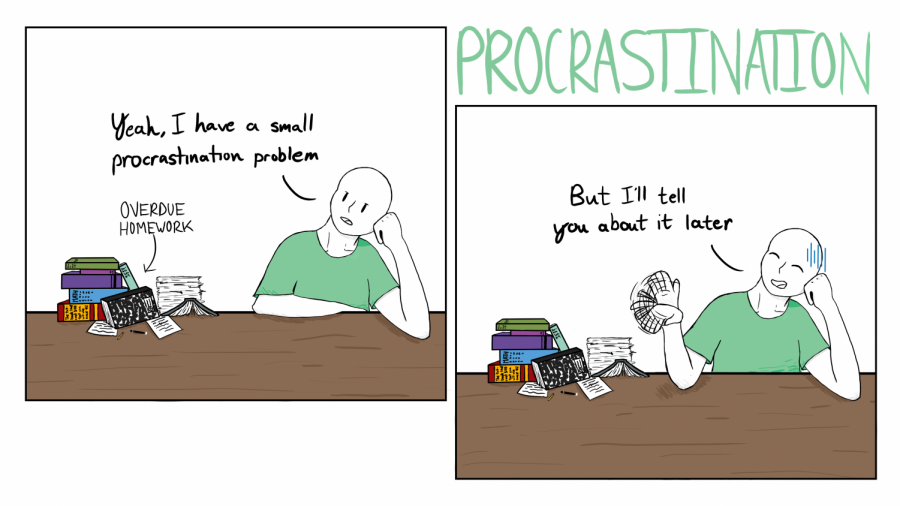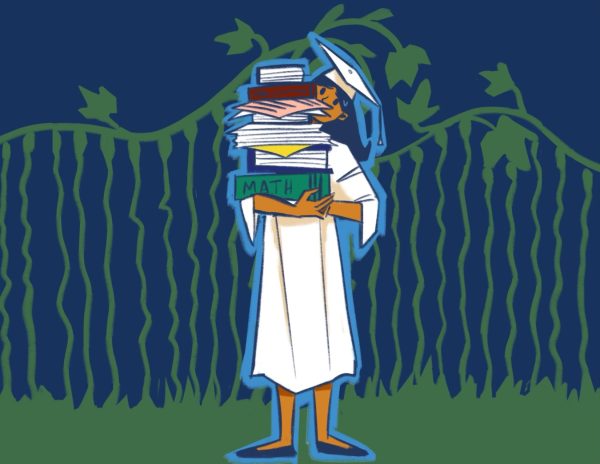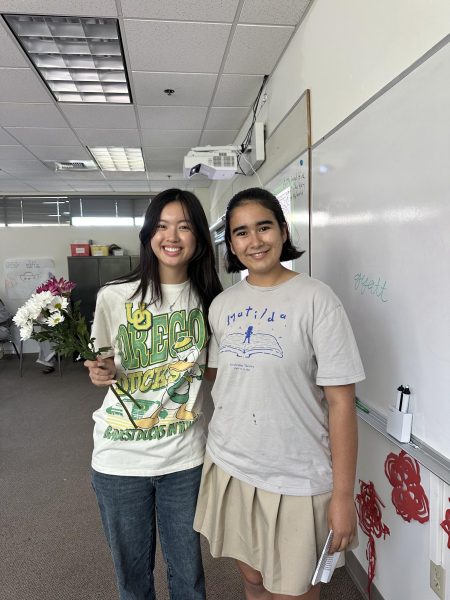Opinion: Procrastination: A Guilty Pleasure
Whenever I announce to a classroom that I’m a chronic procrastinator, it’s always echoed by classmates who chime in with the classic “saaame,” followed by nervous laughter and awkward side-glances at the teacher, whose face is fixed into a disappointed frown.
To put it bluntly, I’m not great at managing time. I postpone my work to the last minute in order to take care of more pressing matters, like organizing my bookshelf by color, and then by author, and then by color again. Apparently, I’m not the only one who feels this way. According to a study conducted by productivity author and blogger Darius Foroux, 88% of students and employees procrastinate for at least an hour a day.
Before you roll your eyes in disgust or embarrassment, it turns out that there are two kinds of procrastination: active and passive. In an interview for Smithsonian Magazine, “Why Procrastination is Good for You,” Frank Partnoy, Professor of Law at the University of California Berkeley and author of Wait: The Art of Science and Delay, identifies active procrastination as the indirectly productive type in which a person will delay a task because they work better under pressure. It’s self-induced procrastination that’s ultimately beneficial.
Passive procrastinators, however, will delay a task simply because it presents an emotional burden, like self-doubt or perfectionism. They seek immediate whims of instant gratification in order to delay or avoid negative emotions.
Everyone should embrace active procrastination. It can be used to nurture creativity and focus, encouraging the completion of minor (yet urgent) tasks, like responding to emails. Waiting to complete an action also makes time for heavy contemplation on a subject. “Historically, for human beings, procrastination has not been regarded as a bad thing…the wisest leaders embraced procrastination,” Partnoy explains.
Olga Mecking, a writer, journalist, and translator, offers insight on active procrastination in her New York Times article “The Case for Doing Nothing.” She explains the benefits of niksen, the act of simply doing nothing, and how it can actually improve creativity as well as productivity. “Daydreaming—an inevitable effect of idleness—‘literally makes us more creative, better at problem-solving, better at coming up with creative ideas,’” explained Sandi Mann, a psychologist at the University of Central Lancashire, as well as one of Mecking’s interviewees.
As far as complete idleness goes, I’ve spent more time organizing my bookshelf than actually working on assignments. Regardless, I always produce something that I’m proud of, whether it’s an essay or an art project. Although it takes a bit longer to put together, procrastinating has given me plenty of time to think about and construct my work—without feeling guilty over ‘wasted’ time.
Works Cited:
Foroux, Darius. “How Common Is Procrastination? A Study.” Medium, The Blog Of Darius Foroux, 4 July 2019, medium.com/darius-foroux/how-common-is-procrastination-a-study-80869467c3f3.
Gambino, Megan. “Why Procrastination Is Good for You.” Smithsonian.com, Smithsonian Institution, 12 July 2012, www.smithsonianmag.com/science-nature/why-procrastination-is-good-for-you-2102008/?c=y&page=3.
Mecking, Olga. “The Case for Doing Nothing.” The New York Times, The New York Times, 30 Apr. 2019, www.nytimes.com/2019/04/29/smarter-living/the-case-for-doing-nothing.html?searchResultPosition=2.

Hailey is a senior and this is her fifth year on Spyglass as well as her second year doubling as the Website Manager and a writing editor. When not writing,...

















![Dr. Zanita Kelly, Director of Lower and Middle School, pictured above, and the rest of Westridge Administration were instrumental to providing Westridge faculty and staff the support they needed after the Eaton fire. "[Teachers] are part of the community," said Dr. Kelly. "Just like our families and students."](https://westridgespyglass.org/wp-content/uploads/2025/03/dr.-kellyyy-1-e1748143600809.png)















































Luca G. • May 31, 2022 at 1:05 pm
couldn’t agree more tbh- well said !!
Anna Fratto • Apr 30, 2020 at 1:12 am
well done Hailey! procrastination buds for life 🙂